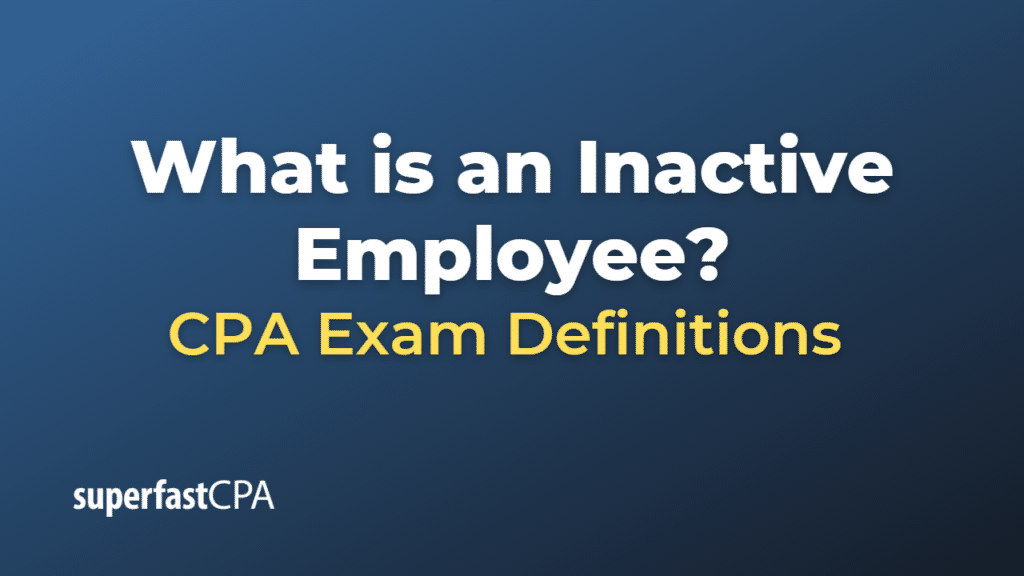Inactive Employee
An inactive employee is an individual who is still officially employed by a company but is not actively working or receiving regular wages. There can be several reasons for an employee’s inactive status. Here are a few examples:
- Leave of Absence: Employees can become inactive if they are on a long-term leave of absence. This could be due to various reasons such as parental leave, sabbatical, personal reasons, or medical leave.
- Suspended Employees: Employees can also be marked as inactive if they have been suspended from work, possibly due to disciplinary reasons.
- Seasonal Employees: Some businesses, such as those in the retail or tourism industry, may have seasonal employees who work only during certain times of the year. Outside of those times, these employees may be classified as inactive.
- Furloughed Employees: During tough economic times or periods of economic uncertainty, companies may choose to furlough employees. A furlough is a temporary leave of employees due to special needs of a company or employer, which may be due to economic conditions at the specific employer or in the economy as a whole. These employees are not terminated and are expected to return to work once regular business resumes, but they are often considered inactive during the furlough period.
It’s important to note that the specific rights and benefits of inactive employees can vary widely depending on the specific circumstances and company policies, as well as the laws and regulations of the jurisdiction in which the company operates. In many cases, inactive employees may still retain certain benefits such as health insurance.
Example of an Inactive Employee
Let’s say Jane works for a large retail company. She has been with the company for several years, and she has decided to go back to school to get her master’s degree. Jane discusses this with her manager, and they agree that she will take a one-year leave of absence to focus on her studies.
During this year, Jane is not working for the company and not receiving her regular wages. However, she is still considered an employee of the company – just an inactive one. The company holds her position open for her return, and she may continue to receive certain benefits such as health insurance, depending on the company’s policies.
Once Jane completes her studies and returns to work, her status changes from inactive to active.
This example illustrates one of the many scenarios in which an employee might become inactive. The specifics can vary widely depending on the individual circumstances and company policies.













